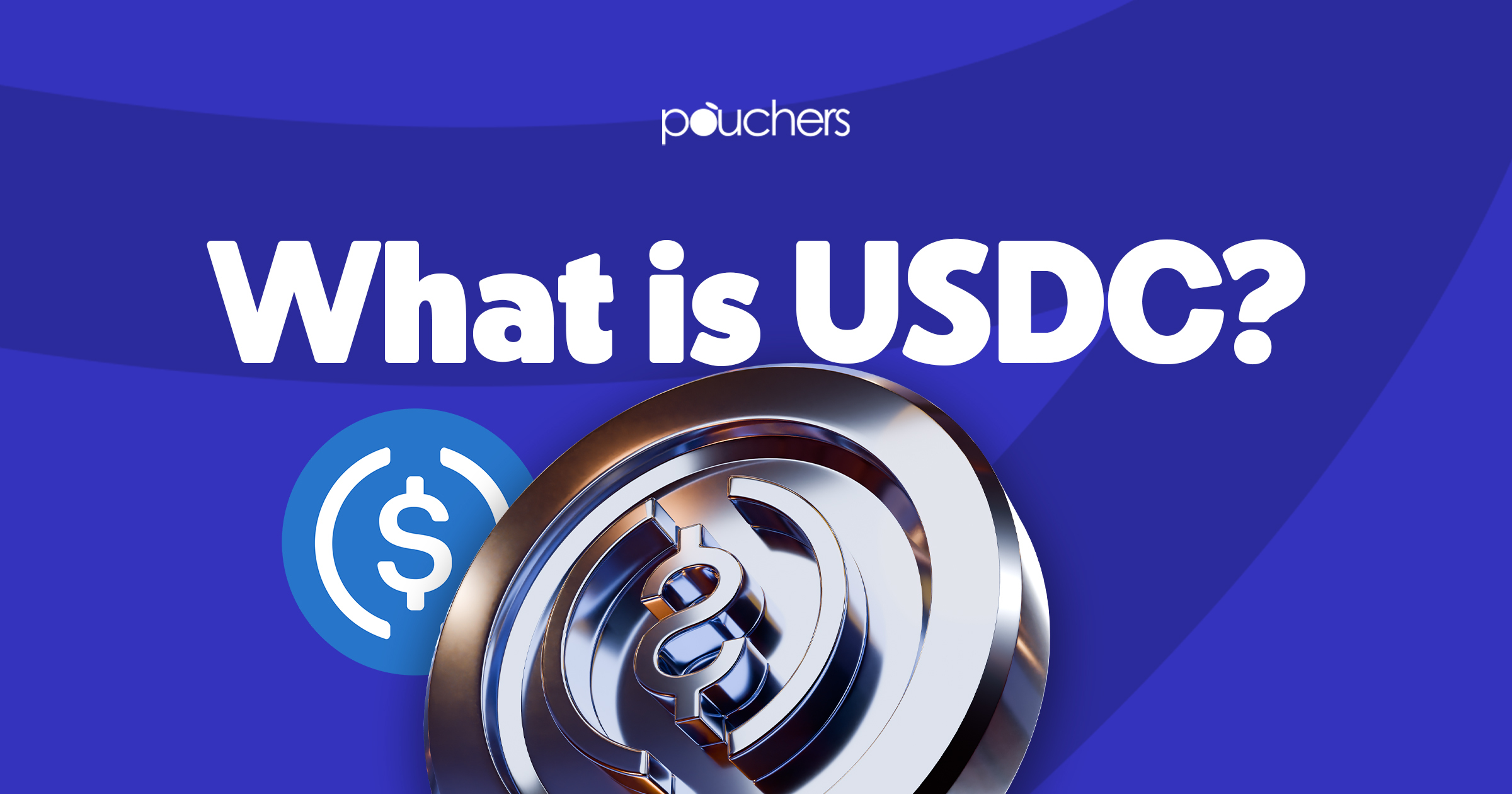Disappointments, frustration, and anger. These are the emotions you would likely feel when you wait five days for a client’s payment, only to see fluctuating exchange rates shrink your earnings.
But what if that same payment could land in your digital wallet in under five minutes, with zero hidden fees? That’s the promise of stablecoins. Combining the reliability of traditional currencies with the speed and transparency of blockchain, stablecoins are transforming how businesses send, receive, and store money globally.
From freelancers in Lagos to exporters in Asia, adopting stablecoins isn’t just a tech trend, it’s a smart growth strategy that reduces costs, protects revenue, and opens doors to international opportunities.
This article breaks down why stablecoins matter for businesses, the risks involved, and how to adopt them effectively.
Let’s get started!
Why Do Stablecoins Matter for Businesses?

Stablecoins matter for businesses because they combine the reliability of traditional money with the efficiency of digital payments. Unlike cryptocurrencies such as Bitcoin, whose prices swing wildly, stablecoins maintain a fixed value, often pegged to the US dollar.
This makes them ideal for companies that want the speed and transparency of blockchain without the fear of losing money to volatility. They allow businesses to send, receive, and store value globally, instantly, securely, and at much lower costs than banks or remittance platforms.
I first realized how powerful this could be in 2023 when I worked with a small digital agency in Lagos. Most of our clients were based abroad, and receiving payments was always stressful. International bank transfers could take up to five working days, and by the time the funds arrived, exchange rate fluctuations had eaten into our earnings.
Then one client in the US suggested paying us in USDT: a stablecoin pegged to the dollar. I was skeptical at first, but when the first payment landed in less than five minutes, with zero bank delays and no hidden fees, it changed everything. The experience felt like a glimpse into the future of business finance.
That moment showed me why stablecoins truly matter. They solve a real problem, not just for tech companies, but for any business dealing with cross-border transactions or volatile local currencies.
A Nigerian business owner can pay a supplier in China or receive funds from a client in the UK using stablecoins, avoiding the endless waiting and unpredictable bank rates.
It’s faster, cheaper, and more transparent. And in economies where inflation is high, stablecoins can help preserve value as businesses can store part of their revenue in a dollar-backed digital coin.
Beyond payments, stablecoins also make financial management smarter. They integrate easily with blockchain tools that allow automatic payments once a task is completed, improving trust between clients and service providers.
For growing businesses, that means fewer delays and better accountability. Every transaction is recorded on a public blockchain, making it easier to track cash flow, audit records, and reduce fraud.
Ways Stablecoins Drive Business Growth
Check out the key ways stablecoins drive business growth today:
1. Lower Transaction Costs
Stablecoins significantly reduce the cost of sending and receiving money across borders. Traditional bank transfers and remittance services often charge between 6% and 10% in fees, depending on the country and intermediary banks.
In contrast, stablecoin transfers can cost between 1% to 3%, making them far more efficient for international trade and payments.
For businesses that handle frequent cross-border transactions, this reduction directly improves profit margins and cash retention.
2. Faster Settlement and Improved Cash Flow
Stablecoin payments are processed on blockchain networks that operate 24/7, which means funds can settle within minutes instead of 2-5 business days as in traditional banking systems.
This speed improves liquidity and helps businesses manage working capital more effectively. Fast settlements also minimize delays in paying suppliers and receiving payments from clients, which is crucial for small and medium-sized businesses (SMBs) that rely on steady cash flow.
3. Protection From Currency Volatility
Stablecoins are pegged to stable fiat currencies like the U.S. Dollar or Euro, protecting businesses in volatile markets from rapid currency devaluation. In regions affected by inflation or exchange-rate instability, using stablecoins can preserve purchasing power and pricing accuracy.
4. Expanded Market Access
Stablecoins make it easier for businesses in developing regions to reach international customers and partners. They eliminate the need for foreign bank accounts and reduce reliance on traditional currency exchange.
This accessibility helps small exporters, freelancers, and digital businesses participate in global commerce without high entry barriers. Many fintech platforms now integrate stablecoin payments directly, giving businesses in Africa, Asia, and Latin America faster access to global markets.
5. Growing Integration into Financial Systems
Stablecoins are becoming part of mainstream financial infrastructure as proven by the global stablecoin supply which surpassed $300 billion this year, reflecting strong adoption and liquidity across industries.
Analysts also project that stablecoins could account for 12% of all global cross-border payments by 2030, up from less than 3% today. This growing institutional and regulatory acceptance encourages more businesses to adopt stablecoins for day-to-day financial operations.
Steps to Adopt Stablecoins in Your Business
Adopting stablecoins in your business is easier than it sounds, but it requires careful planning and compliance with financial regulations.
That said, here are practical steps you need to take to ensure security, efficiency, and transparency:
1. Understand Your Business Needs
Before using stablecoins, identify why you need them. Are you trying to reduce cross-border payment costs, receive global payments, or protect against local currency volatility?
Understanding your goals will help you choose the right type of stablecoin, such as USDT (Tether) or USDC (USD Coin), and the appropriate blockchain network to support it.
2. Choose a Reputable Stablecoin Provider
Not all stablecoins are created equal which is why you need to go for coins backed by transparent reserves and issued by regulated entities. For example, Circle’s USDC is regularly audited and supported by U.S. Treasury assets.
Also, check that your chosen provider complies with anti-money-laundering (AML) and know-your-customer (KYC) standards to keep your transactions safe.
3. Set Up a Secure Digital Wallet
To hold and send stablecoins, you’ll need a reliable crypto wallet. Options include custodial wallets (managed by an exchange) or non-custodial wallets (you control the private keys).
Popular business-friendly wallets include Coinbase Wallet, Trust Wallet, and Metamask Institutional. You should also ensure two-factor authentication and strong password protection are enabled to prevent unauthorized access.
4. Integrate Stablecoin Payments into Your Operations
You can start accepting stablecoins as payment through crypto-friendly payment gateways like BitPay, CoinPayments, or NOWPayments. These platforms automatically convert stablecoins to fiat currency if needed.
For B2B transactions, stablecoins can be used directly to pay suppliers, freelancers, or partners who prefer faster, blockchain-based settlements.
5. Maintain Compliance and Accounting Clarity
Work with an accountant familiar with digital assets to track transactions correctly. Record every stablecoin payment with its fiat equivalent value at the time of transfer for tax reporting.
Also, stay updated on regional regulations. For example, the European Union’s MiCA regulation (2024) and the U.S. Treasury’s proposed stablecoin framework (2025) emphasize transparency, reserve backing, and reporting standards for businesses using digital currencies.
6. Educate Your Team and Clients
Before going live, train your finance team on how stablecoin payments work, how to secure wallets, and how to avoid phishing or scam attempts.
If your customers or partners are new to crypto, provide clear guidance on how to make or receive stablecoin payments safely.
7. Test and Scale Gradually
Begin with small, low-risk transactions before integrating stablecoins fully into your payment or treasury system. Also, monitor transaction times, fees, and user feedback.
As confidence grows, you can then expand usage across departments or regions. Many global businesses now use stablecoins for supplier payments, cross-border payroll, and treasury diversification, all of which strengthen financial agility.
Challenges and Risks of Stablecoin Adoption for Business
Here are the challenges and risks associated with stablecoin adoption for business:
1. Regulatory Uncertainty
Many countries are still developing legal frameworks for stablecoins. That means laws around what stablecoins are (currency, security, asset) can change suddenly.
Businesses might find themselves non-compliant when regulations shift, incurring fines or even bans. In the U.S., for example, the GENIUS Act requires stablecoin issuers to be insured depository institutions with clear reserve rules.
2. Reserve Quality and De-Pegging Risk
Stablecoins are supposed to maintain value by being pegged to assets like fiat money or government bonds. But if the reserves are illiquid, opaque, or mismanaged, or if many people try to redeem at once, a stablecoin can lose its peg. We saw this happen with algorithmic stablecoins like TerraUSD back in 2022.
3. Liquidity and Market Stress
Even stablecoins can struggle under stress. For example, during rapid market changes, it might be hard to convert large stablecoin holdings quickly into fiat without heavy fees or delays. This risk can disrupt cash flow and financial planning for businesses, especially those with large international transactions.
4. Security and Operational Risk
Stablecoins operate on blockchains and rely on digital wallets which means there’s always the risk of encountering hacks, smart contract bugs, or losing private keys. If a business’s wallet is compromised, the losses can be direct and immediate. Also, operational errors (misrouting, wrong addresses) can lead to irreversible loss.
5. AML/KYC and Financial Crime Exposure
Stablecoins’ speed and (sometimes) pseudonymity make them attractive for illicit uses. Without strong anti-money laundering (AML), know your customer (KYC), and transaction monitoring, businesses using or accepting stablecoins can face legal liability or reputational damage.
6. Jurisdictional and Cross-Border Risks
When a business operates in multiple countries, stablecoin regulations often differ. What’s legal in one country may be restricted in another. This complexity can mean extra compliance costs, or even exposure to penalties if business expansion crosses into regions with stricter laws.
Frequently Asked Questions (FAQs)
Are Stablecoins Suitable for Small and Medium-Sized Businesses (SMBs)?
Yes. Stablecoins are suitable for small and medium-sized businesses (SMBs) because they provide fast, reliable, and transparent payment solutions without requiring foreign bank accounts. Small exporters, freelancers, and digital businesses can receive international payments in minutes instead of days, avoid currency volatility, and access global markets that might otherwise be out of reach due to high banking costs or local currency instability.
How Do Stablecoins Enable Faster Cross-Border Payments for Businesses?
Stablecoins enable faster cross-border payments for businesses by settling transactions within minutes instead of the typical 2-5 business days required by traditional banking systems. This speed enhances liquidity and cash flow management, enabling businesses to pay suppliers promptly and receive payments from clients without delays.
What Are the Key Risks Businesses Should Consider When Adopting Stablecoins?
The key risks businesses should consider when adopting stablecoins include regulatory uncertainty, the risk of a stablecoin losing its peg, and security vulnerabilities. Careful provider selection, wallet security, and regulatory compliance are essential to mitigate these risks.
Conclusion
Stablecoins are transforming the way businesses manage money, making cross-border payments faster, cheaper, and more transparent. While risks like regulatory uncertainty and security challenges exist, careful planning, reputable providers, and proper compliance can mitigate them.
By integrating stablecoins into daily operations, businesses, especially those dealing with international clients or volatile local currencies, can enhance cash flow, protect value, and unlock new growth opportunities in the digital economy.





